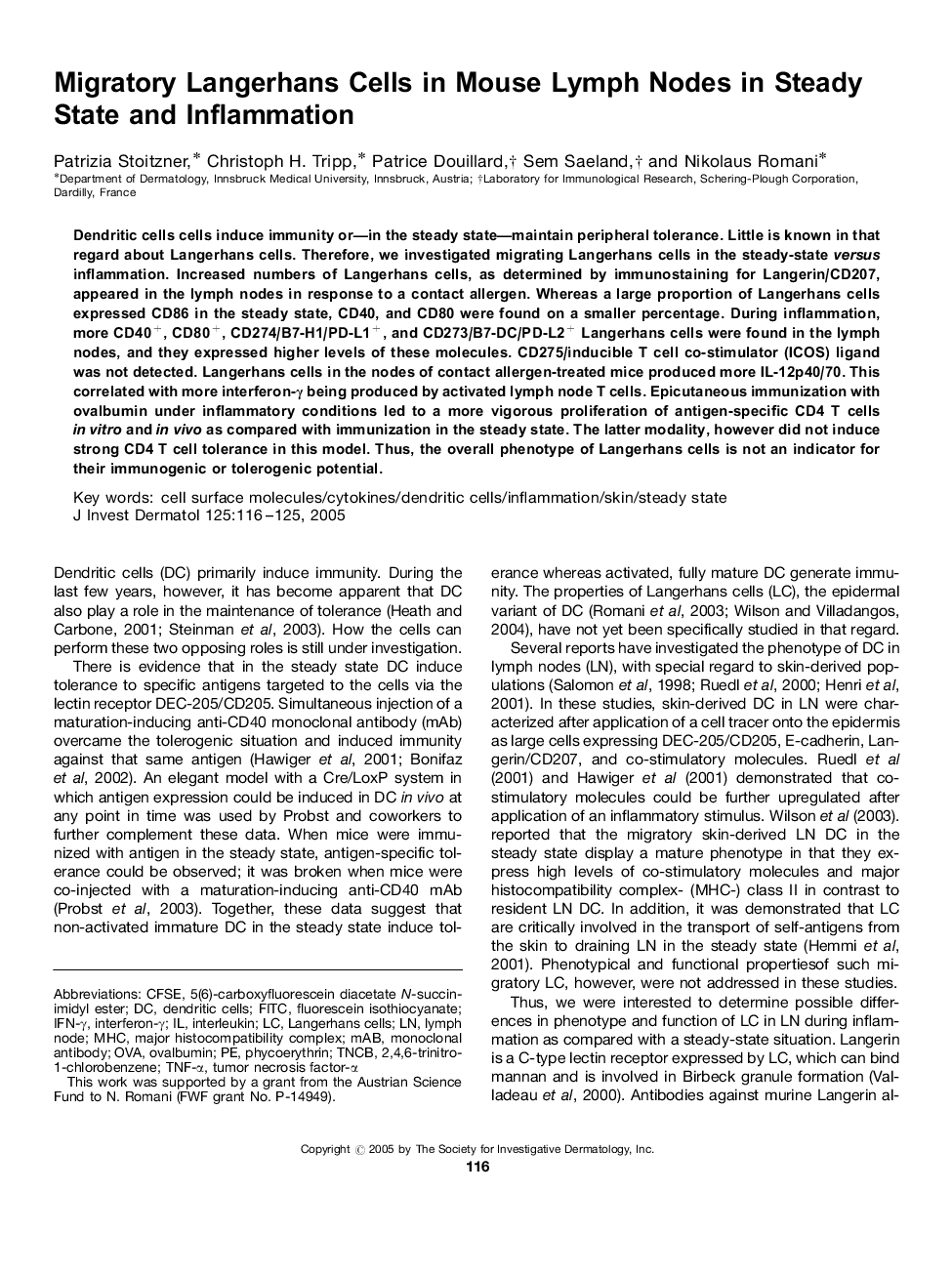| Article ID | Journal | Published Year | Pages | File Type |
|---|---|---|---|---|
| 9230284 | Journal of Investigative Dermatology | 2005 | 10 Pages |
Abstract
Dendritic cells cells induce immunity or-in the steady state-maintain peripheral tolerance. Little is known in that regard about Langerhans cells. Therefore, we investigated migrating Langerhans cells in the steady-state versus inflammation. Increased numbers of Langerhans cells, as determined by immunostaining for Langerin/CD207, appeared in the lymph nodes in response to a contact allergen. Whereas a large proportion of Langerhans cells expressed CD86 in the steady state, CD40, and CD80 were found on a smaller percentage. During inflammation, more CD40+, CD80+, CD274/B7-H1/PD-L1+, and CD273/B7-DC/PD-L2+ Langerhans cells were found in the lymph nodes, and they expressed higher levels of these molecules. CD275/inducible T cell co-stimulator (ICOS) ligand was not detected. Langerhans cells in the nodes of contact allergen-treated mice produced more IL-12p40/70. This correlated with more interferon-γ being produced by activated lymph node T cells. Epicutaneous immunization with ovalbumin under inflammatory conditions led to a more vigorous proliferation of antigen-specific CD4 T cells in vitro and in vivo as compared with immunization in the steady state. The latter modality, however did not induce strong CD4 T cell tolerance in this model. Thus, the overall phenotype of Langerhans cells is not an indicator for their immunogenic or tolerogenic potential.
Related Topics
Health Sciences
Medicine and Dentistry
Dermatology
Authors
Patrizia Stoitzner, Christoph H. Tripp, Patrice Douillard, Sem Saeland, Nikolaus Romani,
